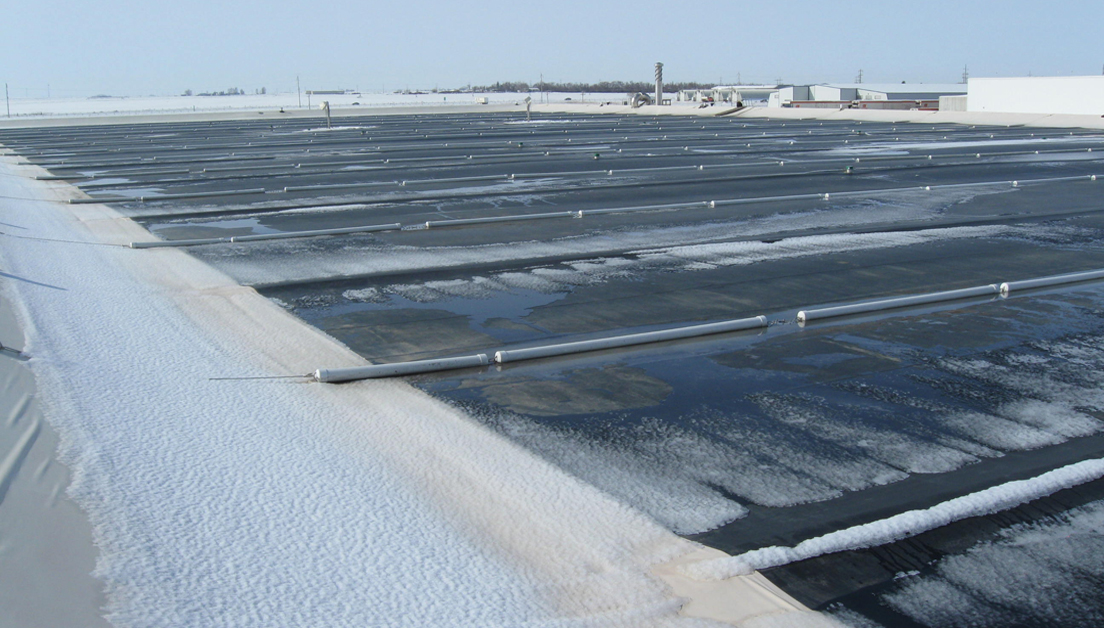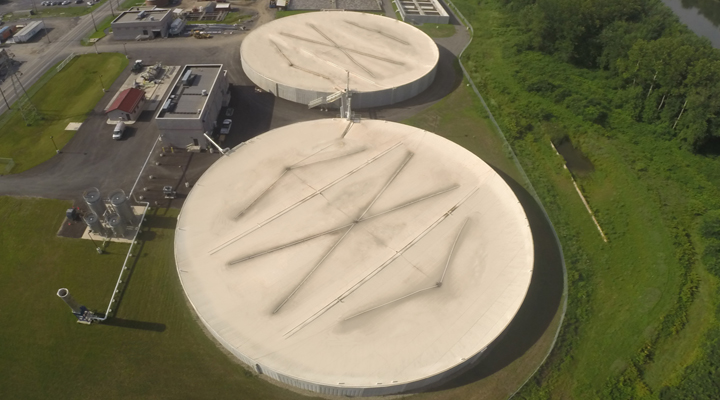Lamb-Weston is a division of ConAgra Limited—one of the largest potato processors in the world. The company operates several french fry processing plants.
Challenge
Lamb-Weston required a wastewater treatment solution at its plant in Taber, Alberta, Canada. Its potato processing wastewaters are characterized by high concentrations of biodegradable chemical oxygen demand (COD); suspended solids (SS); and fat, oil, and grease (FOG). This type of wastewater has proven to be an ideal candidate for anaerobic digestion.
Solution
ADI Systems proposed its well-known proprietary ADI-BVF® reactor for the Lamb-Weston project, and was the successful bidder. This was ADI Systems’ fourteenth installation of this technology to treat potato wastewater and the third BVF® reactor to be built at a large french fry processing plant in the Canadian prairies (two such reactors were already in operation in Manitoba).
Coarse potato waste solids and peels are screened out of the waste stream inside the processing plant. The mud, or silt, is also removed in a separate mud clarifier. The oily wastewater stream is subjected to fat removal/recovery prior to joining the main process stream en route to the anaerobic reactor.
The 56,750 m³ (15 MG) reactor is designed to treat a flow of 6,800 m³/d (1.8 mgd), a load of 56,000 kg/d (123,000 lb/d) COD, and 21,000 kg/d (46,000 lb/d) of SS.
The majority of the organic load is converted into biogas in the reactor, which is then recovered as a source of green energy. Three biogas blowers are used to pressurize and convey the biogas to an 18 MW dual-fuel plant process boiler, which was retrofitted to burn biogas and natural gas together, via a 500 m (1,640 ft) pipeline.

Results
Anaerobic digestion of Lamb-Weston’s wastewater in a BVF reactor permits the recovery of valuable biogas while minimizing the use of electrical energy and the amount of waste solids requiring disposal.
Biogas with an energy value of 615 GJ/d (580 MBtu/d) is produced at design conditions, and is used in the Lamb-Weston plant as a green energy source to displace natural gas in its steam boiler.
The anaerobic effluent is polished in an aerated lagoon/storage system, and then used for irrigation of agricultural land. Stabilized anaerobic sludge is applied on land once or twice a year to take advantage of its tilth and fertilizer value. The anaerobic system averages a COD removal rate of 85 percent.

